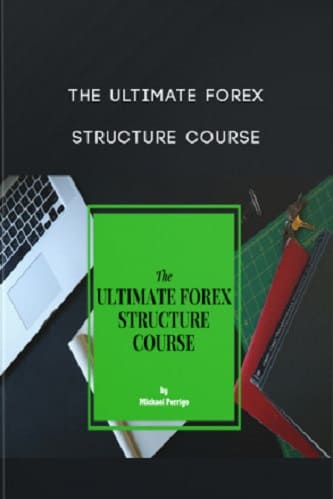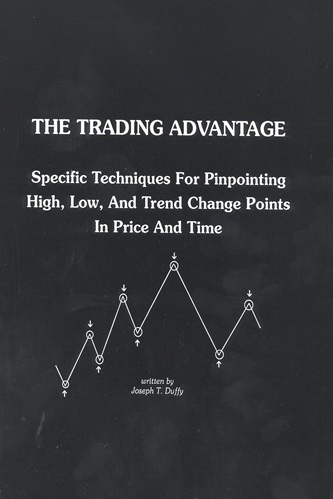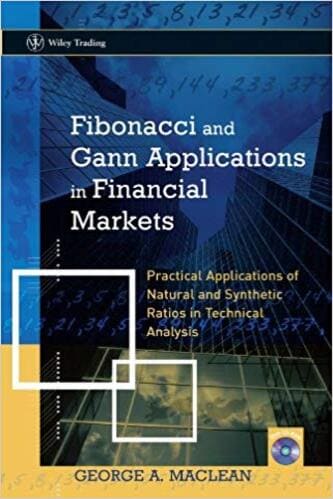Articles
The Gann Side of Fibonacci Numbers By Granville Cooley
Forty-four is a Fibonacci number. Sixty-seven and one-half degrees is a Fibonacci number. Two-hundred and sixty-six is a Fibonacci number. Three-hundred and sixty degrees is a Fibonacci number. For those few of you who have never heard of Fibonacci numbers I can see you saying, “So what?” For those of you who have “read” about the Fibonacci numbers, I can see you doing a double take. For those of you who are supposed to be Fibonacci experts, I can see your eyeballs rolled back, clicking in your head, and your feet up in the air as in a Mut and Jeff cartoon. The cartoon has a big balloon which reads, “He’s got it! He’s got it! By Gann, He’s got it!”
Those who have read about Fibonacci are saying, “What’s this W.D. Gann stuff? I thought Fibonacci has to do with Elliott Waves.” It does, but there is also a Gann side to the Fibonacci phenomenon, sometimes apparent, but often not. It is quite possible that the Gann relationship to Fibonacci has been explored, but if so, I have seen little evidence of it. I am talking about such things as:
- The master numbers.
- The angles.
- The signs and seasons.
- The signs and degrees.
- The stone of Simon.
- The eighth square.
- The death zone and the circle.
- The wanderings and the pyramid.
- The Great Cycle of Enoch.
We could add more but that’s plenty for our purposes now. Let’s investigate the phenomenon of Fibonacci of the above nine items with what I call simple observational arithmetic. I say that because persons who write on Elliott, Gann, and other math wizards are used to writing in mathematical terms, not always understood by the average person.
Like many of you, I had a little algebra and geometry in high school and a little algebra in college, but my field for 20 years was journalism. And when you don’t have many reasons for using algebra and geometry over the years, it becomes hazy. Books have been written on the markets by mathematicians showing the mathematical formulas behind certain systems. But they seem to be targeted for other mathematicians and those persons working with computers.
Suggested Books and Courses About Trading With Fibonacci
The Art of Trading A Correction By Robert Miner
Original price was: $125.00.$21.63Current price is: $21.63.The Ultimate Forex Structure Course By Michael Perrigo
Original price was: $397.00.$63.01Current price is: $63.01.Those books are probably very good for those who understand the formulas, but one gentlemen, well known in the markets and considered a market genius in his own right, said he didn’t understand the books at all. So methods I use might seem very elementary to those with a higher learning of math. If so, I ask them to bear along with those of us of less mathematical background as we explore the nine topics above in simple observational arithmetic.
In addition to not being a mathematician, I’m not an astrologer, astronomer, or Mason either. I’ve read a few books on such and can see some links with the Gann material, but that doesn’t make me an expert. As I said before, my field was journalism, and I’m no expert in that either so don’t look for a journalistic gem in this article. My “arithmetic” approach to Gann was to run thousands of numbers through a calculator looking for patterns that showed up in math, astrology, astronomy, and Masonic books, was well as sundry other books. Those patterns provided the basis for several “discoveries.” Before moving on the nine topics above, let’s look at a couple of “amazing” facts that are noted by Fibonacci experts.
One of the “amazing facts” is that the ratio of the first term to the second term in a Fibonacci series is 1.618 and from the first term to the third term is 2.618. They also like to tell us that if we divide the second term into the first and multiply that times the 1.618 ratio, we will come up with the number one. Let’s put down two groups of three Fibonacci numbers and a group of three non-Fibonacci numbers and see what we can find by simple arithmetic observation. Since all Fibonacci numbers do not fit the 1.618 ratio exactly, let’s put down the ones that are the closest and eye ball them. The three numbers are 55, 89, and 144. When we divide 55 into 89 we get 1.6181818. And when we divide 55 into the next higher Fibonacci number, 144, we get 2.6181818. Now let’s look at another series not so perfect but yet of the same Fibonacci series, 8,13, and 21. First, we divide 8 into 13 and get 1.625 and we divide 8 into the next higher number and get 2.625.
All very interesting. Now let’s look at some non-Fibonacci numbers picked at random. Let’s use the year 1988 and separate it into two numbers 19 and 88, and add the 19 to the 88 so we get the following sequence, 19, 88, and 107. Next, we find the relationship between the first number and the second, and the first and the third, in the same way we did the other two sequences. We divide 19 into 88 and get 4.6315789. When we divide 19 into 107 we get 5.6315789. In all three cases above, the whole numbers changed when we divided the first number into the second and then the third, but the decimal fraction did not. What’s going on here?
The mathematician is lighting his pipe and saying, “Elementary, my dear Watson, observe what you did.” Let’s observe. In the first sequence the division by 55 into 89 can be counted as one unit of 55 with 34 left over, and the fraction of 34 divided by 55 is .6181818. When we added 55 to 89 to get 144, we simply added another unit of 55 to the pot which gives us two units of 55, or 110 with 34 left over. That remainder of 34 divided by 55 will always be .6l81818. We could keep adding 55 to the pot and dividing by 55 till the cows come home and we would still end up with a remainder of 34. The whole number would grow but the decimal fraction would always be the same. Try it for yourself. It works every time.
Let’s look at the second sequence of 8, 13, and 21. When we divide 8 into 13 we get one unit of 8 plus 5 left over, which represents .625 of 8. When we add 8 to the 13 to get 21, we are simply adding another 8 to the pot. Dividing 8 into 21 we have two units of 8 with 5 left over and 5 divided by 8 is still .635. We can add 8’s to the pot until the cows come home and divide by 8 and still have a remainder of 5. It works every time.
In the third sequence of 19, 88, and 107, we divide 88 by 19 and get four units of 19 which equal 76 with 12 left over. The remainder of 12 divided by 19 gives us the decimal fraction, .1635789. By adding 19 to 88 to get 107, we are simply adding 19 to the pot of 88 and getting five 19’s, or 95 with 12 left over. Need I tell you about the remainder of 12 and the cows again? It’s still working! Now for the second “amazing fact” about Fibonacci numbers that the experts like to point out to us. The fact that when you multiply 1.618 by .618 you get one or to be more exact .999924. The reason why the multiplication does not equal one is because the two Fibonacci ratios have been rounded off.
The two Fibonacci ratios are obtained by dividing the smaller Fibonacci number into the larger and then the larger into the smaller. Let’s take the first part of our first example, 55 and 89. When we divide 89 by 55 we get l.6l81818 as before, and then we divide 55 by 89 and obtain .6 179775. When we multiply the two results we get .9999999. From our second example we can use 8 and 13. Dividing 8 into 13 we get 1.625 as before. Dividing 8 by 13 we get .6153846. Multiplying the two results we get .9999995. Let’s pull a Dr. Watson and observe what we have done. In each case we divided a smaller number into a larger one and then the larger one into the smaller one and multiplied the results, getting a decimal number almost equal to one. The reason for it not being exactly one is the rounding off that has to be done.
So let’s express each of the numbers as fractions and then multiply. We can express 89 divided by 55 as 89 over 55; and 55 divided by 89 as 55 over 89. We multiply and get 4895 over 4895. Any number over itself or divided by itself is always one. The same procedure for 8 and 13 gets us 104, over 104 or one. Ditto for 19 and 88 which equals 1672 over 1672 or one. In our review of the two properties of the Fibonacci sequence we have really found nothing magic or amazing. It is simply how our mathematical system works. Interesting, but not amazing. Now let’s look at some of the other interesting properties of the Fibonacci sequence starting first with the Master numbers.




